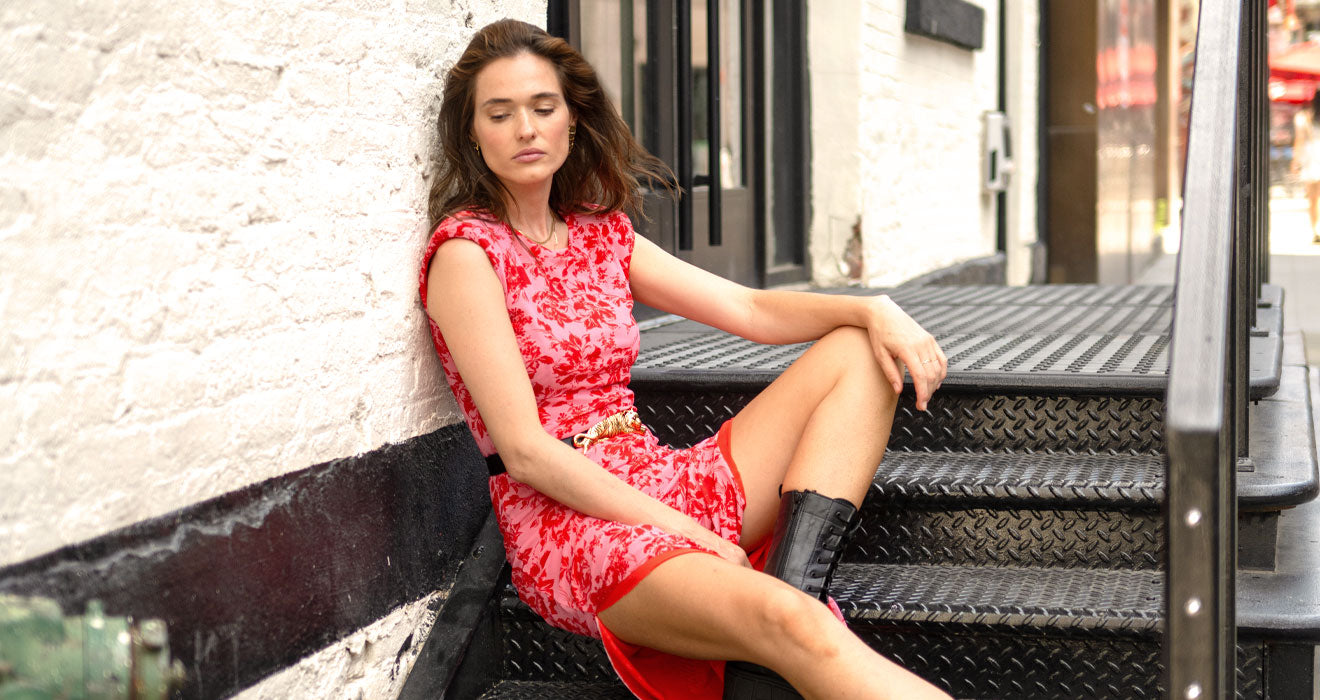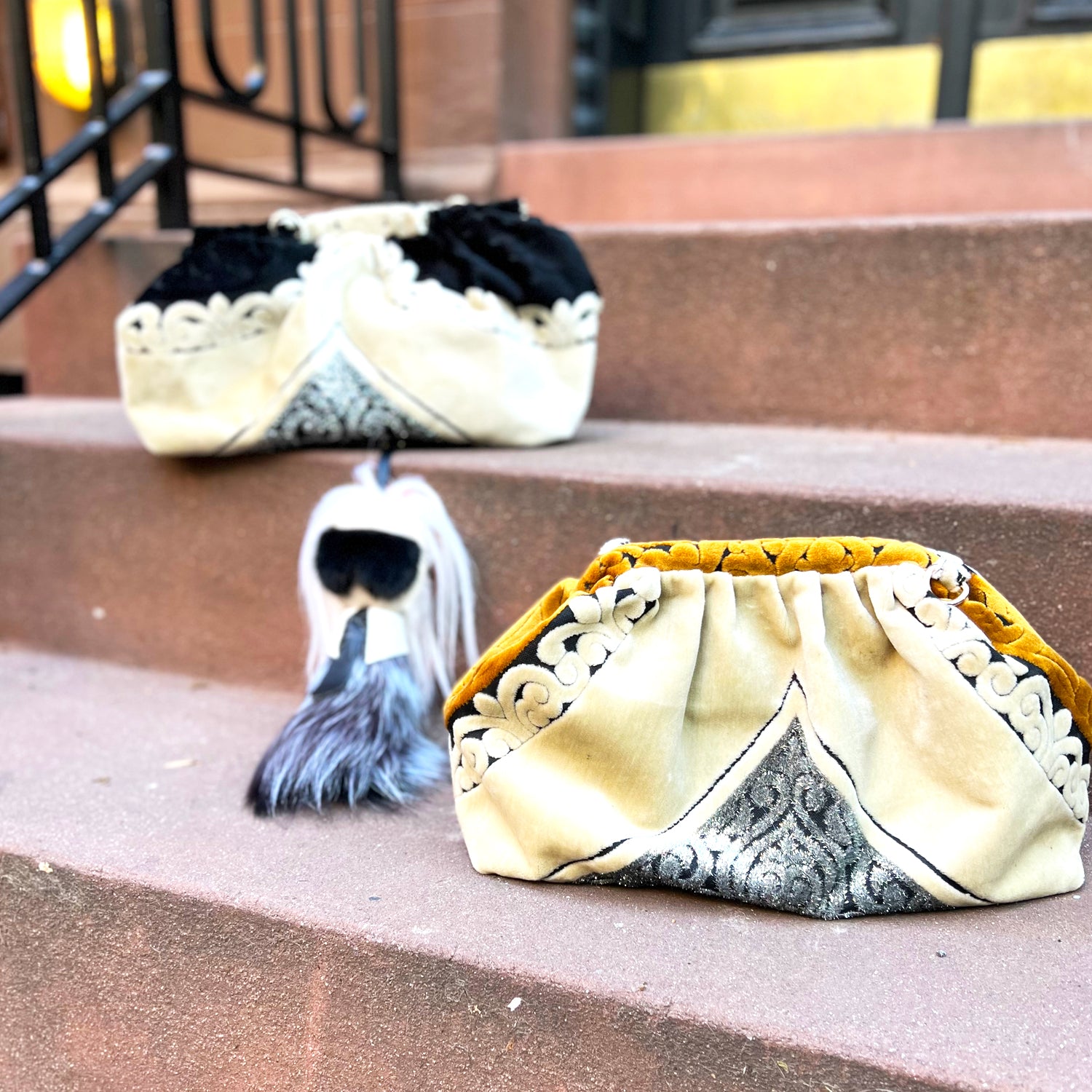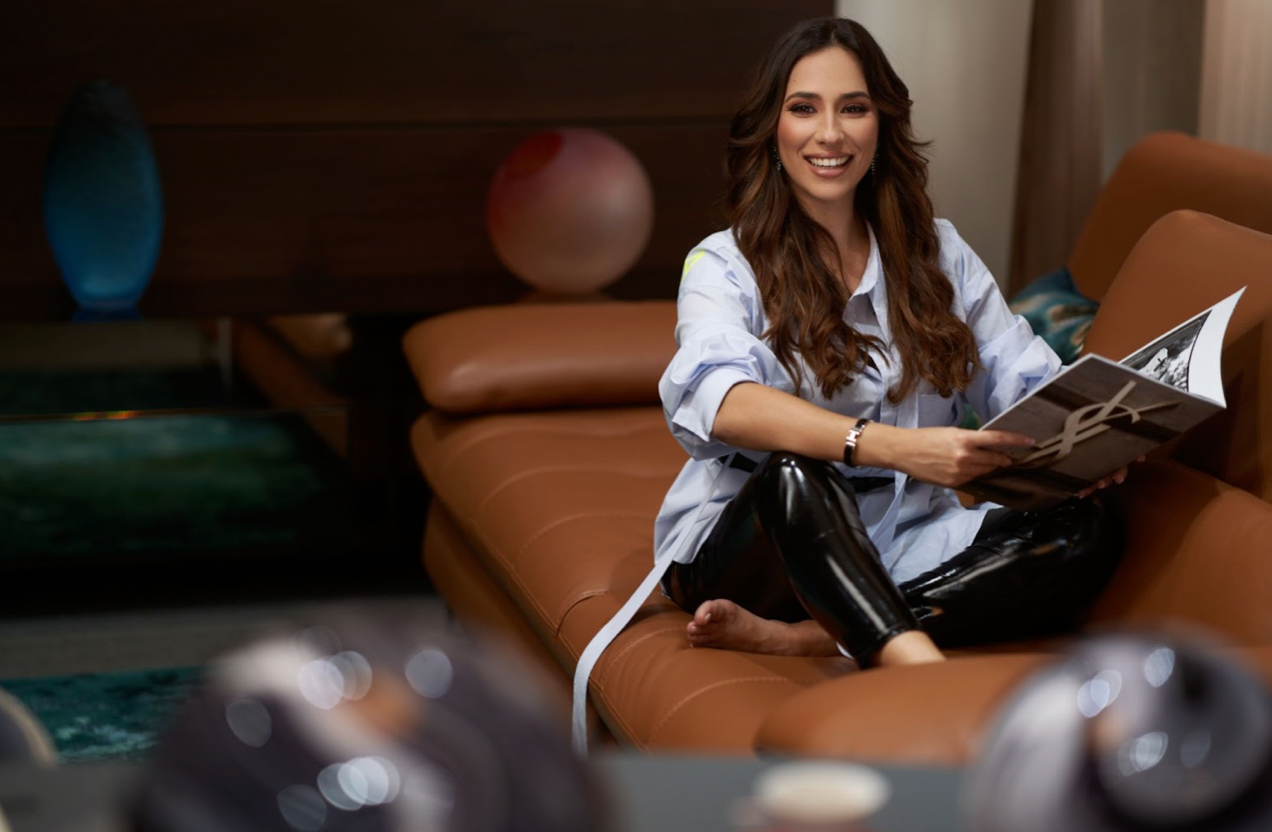 L2R image consultant, stylist, and international fashion guru, Samia Laaboudi, is much more than meets the eye. With a portfolio and a client list that spans the globe, Samia took the leap from the world of finance into the world of fashion when numbers of a different kind struck her attention.
L2R image consultant, stylist, and international fashion guru, Samia Laaboudi, is much more than meets the eye. With a portfolio and a client list that spans the globe, Samia took the leap from the world of finance into the world of fashion when numbers of a different kind struck her attention.
While the detrimental impact of fast fashion waste on the environment is not
news, the throwaway culture has worsened progressively over the years, with most items worn just seven times, a dramatic drop of more than 35% since the mid-2000s. Circular fashion, a movement that encourages zero-waste by upcycling, reselling, and reimaging clothing, became Samia’s primary focus.
“The equivalent of a large trash truck full of clothes ends up on landfill
sites each second,” Samia noted, “and if the trend continues, the number
of fast fashion waste is expected to soar up to 134 million tons a year by
the end of the decade.”

August 2022 fashion editorial for @bazaarvietnam assisting the fashion editor and stylist Arnold Milfort
Making a move from Wall Street to Fifth Avenue, Samia, who already obtained multiple advanced business degrees from reputable European institutions, received a degree from New York’s Fashion Institute of Technology.
Believing she could make a difference as an image consultant, Samia explains how conscious fashion is transforming the clothing industry, expected to outpace the broader retail and online fast fashion sectors 11-fold by 2025.

Style Meeting Sustainability
Samia explained that building a conscious closet does not run in opposition to keep up with fashion trends. But, “in fashion, what goes around, comes around, and the zero-waste movement is a great way to discover timeless treasures and be your own wardrobe designer.”
The fast-growing resell and upcycle markets are helping to transform consumers’ closets, reduce fashion’s negative impact on the planet, and put less of a dent in our pocketbooks.

When Samia first entered the fashion world back in 2020, she began researching fast fashion’s impact on global environmental and humanitarian concerns.
Embarking on a quest to examine post-post-pandemic consumer spending habits particularly in fast fashion, she discovered that 60% of consumers changed their buying habits since the start of the pandemic.
“The pandemic was an amazing opportunity to push the reset button, Samia, offered, accelerating people’s views on sustainability and conscious purchasing.”
With time to research brands and step away from the consumption merry-go-round, combined with less accessibility to retail shopping for the first time ever, consumers got creative, reimaging their own closets and revamping their existing wardrobes.
Each of us acting as our own wardrobe detoxifiers, the world seemed to be moving in a positive direction. But as we return to our “normal” lives, the question is: will consumers revert back to over-consumption, will the fashion industry resume over-manufacturing, and will greenwashing keep the wool over our collective eyes as it all happens?
Samia suggests how all of us can become part of the conscious fashion movement.
- Use Eco-conscious Apps Like: TreeClicks, Good On You, United Wardrobe, Depop, Fair Fashion
- Resell your unwanted clothing
- Donate to local shelters
- Create as many outfits as you can from investment pieces
- Shop Consciously
Conscious Shopping
Conscious shopping is all about buying less and looking deeper into a brand’s eco-consciousness before making a purchase. Looking past just the label, taking time to google a brand’s sustainable practices before investing your hardened dollars to support a business. We’re all so used to impulsively buying whatever looks good on the surface, but the real beauty of a piece of clothing runs deeper than its design and impressive label.
Conscious shopping takes a little bit of discipline, especially when it comes to investment clothing. When shopping for investment pieces, Samia suggests considering the following:
- Is it something that you can foresee using for years to come?
- Will it work with your existing staples?
- Will last season-after-season?
- Is the brand sustainable?
But we all have the urge to experiment with trends, so “if I had to choose just two investment pieces to purchase every season,” Samia suggests, they would be a great blazer and a bag”.

When clients ask Samia how they can be more sustainable,” Samia offers, “often, people think being sustainable means making drastic changes, but it’s more of a mindset that starts with incorporating good habits towards more conscious consumption.”
Samia’s Tips for Sustainable Shopping
1. Start by analyzing your closet: sometimes we just need to take a step back and gain a new perspective to appreciate the clothes that we already own.
Ask yourself, “what looks I can create with this item with what I already have in my closet.”
2. Invest in quality pieces that will last longer, trying to keep in mind the cost per wear of each item, if possible.
Ask yourself: Will I only wear it once or will I wear it 10 times? If you spend $1000 on an item you’ll only wear once vs. one you’ll wear 10 times, the cost per wear is simple to see. Bags, blazers, and jeans are generally the least cost per wear items, so when buying a great blazer, for example, make sure it’s not so trendy that it’s only going to work for one season.
3. Check fabric composition and washing instructions before buying.
Ask yourself: “Will I have to dry clean this item (factor in the cost for dry cleaning into the purchase.) Alsi consider your lifestyle when choosing a fabric. Is it too delicate for a busy mom of an active toddler, for example.
4. After answering these questions, ask yourself the final question: do I really need this item? If the answer is yes, then try to buy second hand, do a swap, or rent.
If none of that is doable, then make sure to purchase from a sustainable brand.
Bonus tip: When you get home from an event that inspires your styling juices, before you jump online searching for new clothes, go through your closet and see which pieces you already have that could be upcycled and get a second chance for life.

The most sustainable materials employ a closed-loop or circular system that recycles waste and puts it back into production using ethical and humane practices. When choosing a brand, it’s critical to do your research to support labels that are truly striving for sustainability. It’s also important to consider the working conditions and the manufacturing process. “L2R strives to be transparent about the true nature of their label, “ she explains. Continuing to find creative ways to repurpose remnants and leftover fabric, L2R is constantly on the zero-waste quest and Samia is right there song with Ghizlane leading the charge.
From concept to creation, L2R’s zero-waste, #NOWASTENOBULLSHIT philosophy follows. Never made from new materials, L2R’s eco-friendly packaging, hang tags, and labels are made with leftover threads and fabric. Any scraps that are unfit for use are donated to toymakers to use for stuffing. This marriage of reducing waste and slowing down production is at the center of a whole new leg of the fashion industry.

Zero-waste brands are emerging to create unique fashion options that are not only planet-friendly but are more accessible to the everyday consumer. Combining style with sustainability, zero-waste brands like L2R are leading the charge.
How Samia Laaboudi and L2R Joined Forces
Samia and Ghizlane knew that a collaboration would prove to be invaluable from the instant they met. “When I met Ghizlane I immediately loved her and L2R because we share the same values about how we see fashion —especially sustainable fashion,” she added. “And when Ghizlane asked me to help her on her last collection and editorial photoshoot,” Samia added, “we actually started to collaborate.”

With Samia sharing her fashion insights and research about trends she was seeing on the runways in NY and Paris and Ghizlane sharing her ideas and experience,” the two were a natural fit.
“Very naturally, Ghizlane started to share with me the ideas for the dead stock that she was discovering to develop the new collection,” Samia continued, “and I started to become involved slowly but surely in the process.”
Offering her expertise as an image consultant and stylist to Ghizlane during the creative process, “has helped us to take into consideration several dimensions from body shapes to colors” all in an effort to better serve the L2R client.
“Being able to work with a circular fashion brand like L2R and a designer like Ghizlane that shares the same values makes it even more important and I really think that it's amazing team work.” she adds. “We complement each other so well, " Samia added, “and join forces to spread the word to the world that it’s possible to be stylish and conscious when you wear a sustainable brand like L2R— and especially when it’s made in Morocco!

“Every step you take towards living a more sustainable lifestyle counts.”
If we all work together to shop consciously, fashion can stop being a part of the problem—and become part of the solution.










